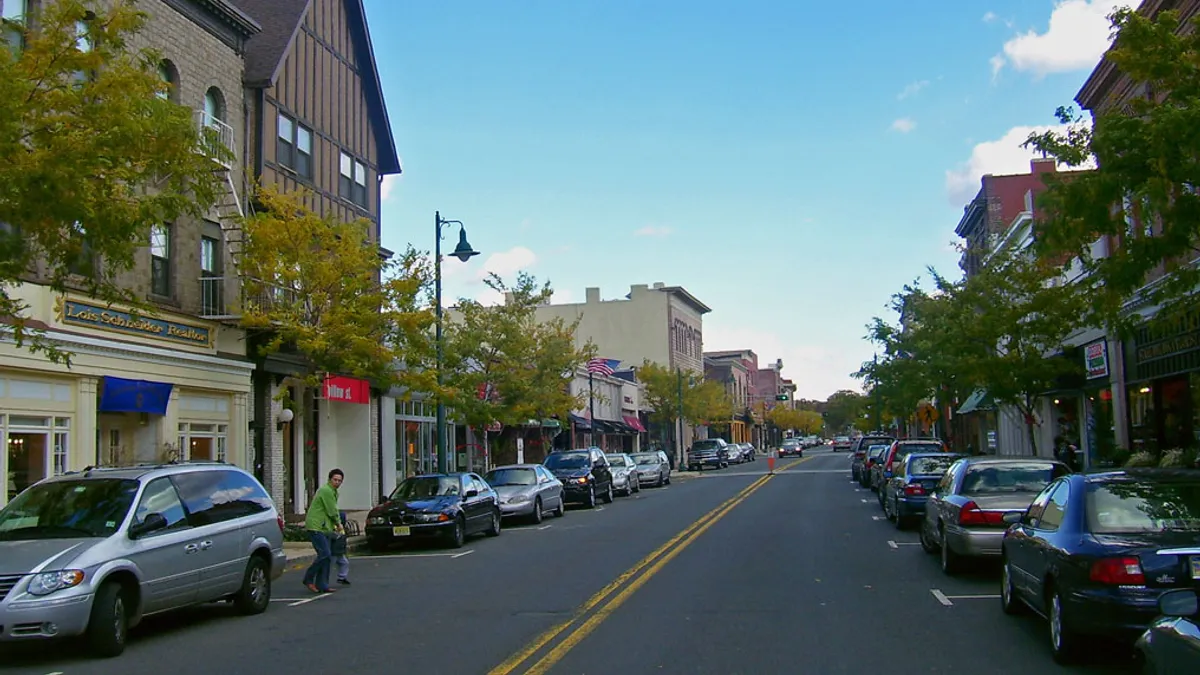Dive Brief:
- Summit, NJ has made structural changes to some roadways and intersections in response to safety concerns about distracted pedestrians, according to NJ.com.
- The city has “bumped out” curbs at some intersections — an expense of about $5,000 per intersection — and painted lines mirroring bike lanes to slow drivers down. It will also install four-way stop signs at four intersections, put in new speed humps, and build flashing pedestrian beacons at busy crossings.
- The Summit Police Department is also working on educational campaigns such as a “Sack the Phone” program at Summit High School to encourage pedestrians to eliminate distractions while on sidewalks.
Dive Insight:
The Governors Highway Safety Association reported nearly 6,000 pedestrians were killed in 2017, the second year in a row numbers were that high, and a marked increase from previous years. The group noted the number of active smartphones in the U.S. increased 236% between 2010 and 2016, which it called an “interesting correlation,” especially with cellphone-related emergency room visits also on the rise. Overall, 16% of all motor vehicle deaths were pedestrians, up from 11% a few years ago.
Cities are taking steps to make their streets friendlier to pedestrians and bikers, but the increase in walking also carries risks. Honolulu has even passed a law permitting the assessment of fines for pedestrians who walk into streets while looking at their phones. Even though Summit has not seen a pedestrian fatality since 2011, Police Chief Robert Weck said proactive measures were necessary. “Walking is one of the best things we can do to stay healthy and enjoy our city, but we need to continue to put safety first,” Weck said in a statement.
It is a reminder that cities must balance safety with promoting alternative transportation modes, even at the cost of physical infrastructure changes. It’s similar to the strategies some cities have adopted to adapt to the increase in bicycles. Portland, OR is standardizing its bike lane design to better protect bikers, while Detroit has even begun reworking a major thoroughfare to force cars to slow down and better accommodate bikers and walkers.











